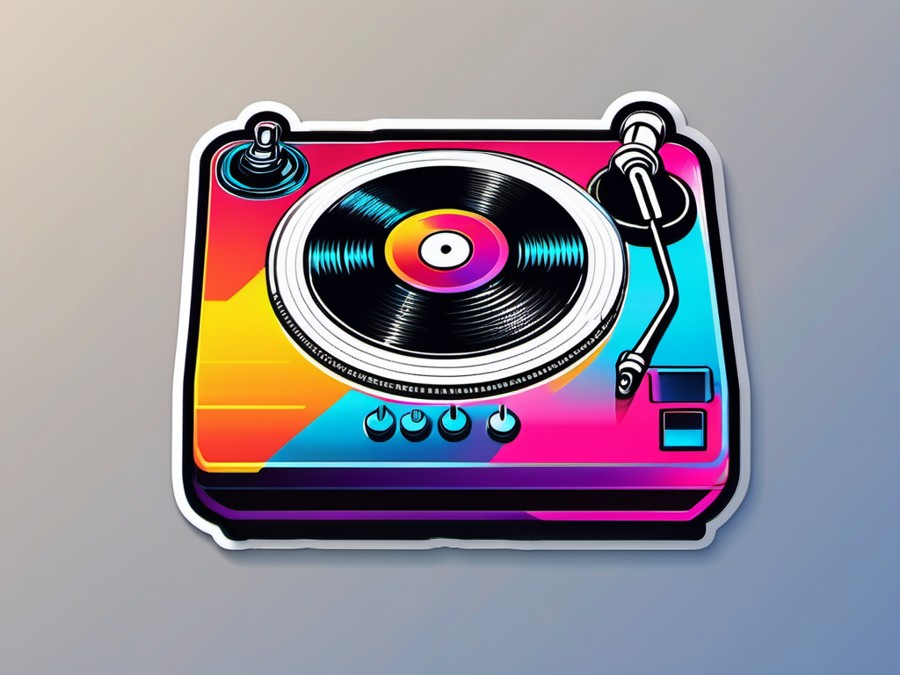· Charlotte Will · Turntables · 8 min read
What is the Importance of Turntable Cartridge and Stylus?
**Discover the crucial role of the turntable cartridge and stylus in enhancing your vinyl experience. Learn about compatibility, maintenance tips, and the importance of choosing the right components for superior sound quality and record preservation.**

Welcome, audiophiles! Today we’re diving into the heart of your vinyl experience: the turntable cartridge and stylus. Why are they so important? Let’s find out how these tiny components can make or break your listening experience, and why choosing the right ones matters.
Understanding Your Turntable: The Basics
Before we dive into the nitty-gritty, let’s ensure we’re on the same page about what a turntable is. A turntable, or record player, is an essential piece of equipment for vinyl lovers. It plays records by converting the grooves on the record into electrical signals, which are then amplified and turned into sound.
The Role of the Cartridge in Your Turntable Setup
What is a turntable cartridge?
The cartridge is the part of your turntable that houses the stylus (or needle) and contains a tiny magnet that converts the kinetic energy of the stylus moving in the record groove into electrical signals. These signals are then sent to your amplifier and speakers, producing the music you hear.
Types of turntable cartridges: Moving Magnet (MM) vs. Moving Coil (MC)
There are two main types of cartridges: Moving Magnet (MM) and Moving Coil (MC).
- Moving Magnet: These are the most common type. They use a magnet attached to the stylus that moves within a coil of wire, producing an electrical signal. MM cartridges are generally considered more durable and easier to replace.
- Moving Coil: In MC cartridges, the wire coils move within a stationary magnet. Generally, they provide better sound quality and are preferred by audiophiles. However, they tend to be more expensive and delicate.
For a deeper dive into the differences between MM and MC cartridges, check out this article.
The Stylus: Your Turntable’s Secret Weapon
What is a stylus?
The stylus, often referred to as the needle, is the small point at the end of the cartridge that rides in the groove of your vinyl record. It’s responsible for tracking the grooves and converting their movements into electrical signals that your turntable’s cartridge translates into sound.
Stylus shapes and sizes: Conical vs. elliptical
Styli come in different shapes and sizes, with the two most common being conical and elliptical.
- Conical: These have a round tip and are generally considered more durable. They’re great for beginners but may not provide the same level of detail as elliptical styli.
- Elliptical: These have a more complex shape that can track the grooves with greater accuracy, providing better sound quality and detail. However, they tend to be more fragile.
Learn more about stylus shapes and their effects on sound quality here.
Why the Cartridge and Stylus Are Crucial for Your Turntable
Impact on sound quality and fidelity
The cartridge and stylus work together to translate the physical grooves in your vinyl into the music you hear. A high-quality cartridge and stylus can significantly enhance sound quality, providing greater detail, clarity, and depth.
Ensuring accurate record tracking
A well-aligned stylus tracks the grooves accurately, ensuring that your records are played correctly and without damage. A poorly aligned or worn stylus can lead to distorted sound, reduced fidelity, and even damage to your precious vinyl collection.
Choosing the Right Cartridge and Stylus for Your Turntable
Compatibility considerations
When choosing a cartridge and stylus, it’s crucial to ensure they’re compatible with your turntable. Some turntables use specific types of cartridges, so check the manufacturer’s guidelines to avoid any issues.
Matching cartridge and stylus to your turntable’s specifications
Consider the tracking force (the downward pressure applied by the stylus) and the cartridge’s output voltage (the electrical signal it produces). These specifications should match your turntable’s requirements to ensure optimal performance.
Setting Up Your Turntable Cartridge and Stylus
Proper alignment techniques
Aligning your cartridge properly is essential for accurate record tracking. Ensure that the stylus is perpendicular to the grooves on your vinyl, and that it’s centered over the spindle. This might involve adjusting the cartridge’s position or using a stylus alignment tool.
Tracking force adjustments
Adjusting the tracking force ensures that the stylus is exerting the correct amount of pressure on your records. Too much pressure can damage your vinyl, while too little may result in reduced sound quality and incorrect tracking. Consult your turntable’s manual for the recommended tracking force.
Maintenance Tips for Long-Lasting Performance
Cleaning your stylus
Regularly cleaning your stylus helps maintain its performance and extends its lifespan. Use a stylus brush or cleaning fluid designed for vinyl records to keep your stylus free of dust and debris.
Caring for the cartridge
Keep your cartridge clean and dry. Avoid touching it with bare hands, as the oils from your skin can damage the delicate components. Store your turntable in a cool, dry place to prevent dust and humidity from affecting the cartridge.
Signs It’s Time to Replace Your Turntable Cartridge and Stylus
Noticeable wear and tear indicators
Look for signs of wear on the stylus tip. If it’s worn down or damaged, it’s time for a replacement. Additionally, if you notice reduced sound quality, distortion, or skipping, it might be a sign that your cartridge or stylus needs attention.
Changes in sound quality
A decline in sound quality can indicate that your cartridge or stylus is no longer performing optimally. Regularly listen to your favorite records and pay attention to any changes in their sound quality.
Upgrading Your Turntable Cartridge and Stylus: Is It Worth It?
Benefits of upgrading
Upgrading your cartridge and stylus can significantly enhance your listening experience. Higher-end components often provide better sound quality, greater detail, and improved fidelity.
When to consider a high-end cartridge and stylus
If you’re looking to elevate your home audio setup or become a serious vinyl enthusiast, investing in a high-end cartridge and stylus might be worth it. However, keep in mind that these upgrades can come with a higher price tag and may require additional maintenance.
Comparing Popular Turntable Cartridges and Styli
High-performance options for audiophiles
There are numerous high-performance cartridges and styli on the market, each offering its unique benefits. Some popular options include:
- Ortofon 2M Red: Known for its balance of performance and affordability, the 2M Red is a great choice for many turntable setups.
- Audio-Technica AT-F7: This moving magnet cartridge is praised for its detailed sound and high output voltage.
- Shure M97xE: Offering superior tracking ability and a conical stylus, this cartridge is popular among DJs and enthusiasts alike.
Read more about some of the best turntable cartridges and styli on the market here.
The Impact of Cartridge and Stylus on Vinyl Records
Preventing record damage
A well-maintained cartridge and stylus can significantly extend the lifespan of your vinyl records. By keeping these components in good condition, you can prevent damage to your precious collection and enjoy your records for years to come.
Common Misconceptions About Turntable Cartridges and Styli
Debunking myths about replacement frequency
One common misconception is that styli need to be replaced frequently. While it’s true that they do wear out over time, proper maintenance can extend their lifespan. Regular cleaning and careful handling will help you get the most out of your stylus.
Case Studies: Real-World Examples of Cartridge and Stylus Importance
Lessons learned from turntable enthusiasts
Many audiophiles and vinyl enthusiasts have experienced firsthand the transformative power of a high-quality cartridge and stylus. By sharing their stories, we can gain insights into the importance of these components and the impact they have on our listening experience.
Conclusion: Embracing the Art of Vinyl with the Right Cartridge and Stylus
The turntable cartridge and stylus are the unsung heroes of your vinyl experience. By understanding their role and choosing the right components for your setup, you can greatly enhance your listening enjoyment. So, grab your favorite record and let the music play on!
FAQs
How often should I replace my turntable cartridge and stylus?
The lifespan of your cartridge and stylus depends on several factors, including usage frequency and maintenance habits. As a general guideline, consider replacing them every 1,000 to 3,000 hours of playtime.
What is the difference between a conical and elliptical stylus?
A conical stylus has a round tip and is generally more durable, while an elliptical stylus has a complex shape that can track grooves with greater accuracy, providing better sound quality and detail.
Can I use any cartridge with my turntable?
Not all cartridges are compatible with every turntable. Ensure that the cartridge you choose is compatible with your turntable’s specifications, including tracking force and output voltage.
How can I tell if my stylus needs to be replaced?
Look for signs of wear on the stylus tip and pay attention to any changes in sound quality. If you notice distortion, reduced detail, or skipping, it might be time for a replacement.
What is the best way to clean my stylus?
Use a stylus brush or cleaning fluid designed for vinyl records. Gently clean the stylus tip, avoiding any sudden movements that could damage it.
That’s all for now! Stay tuned for more tips and insights on the art of vinyl. Until next time, happy listening!




